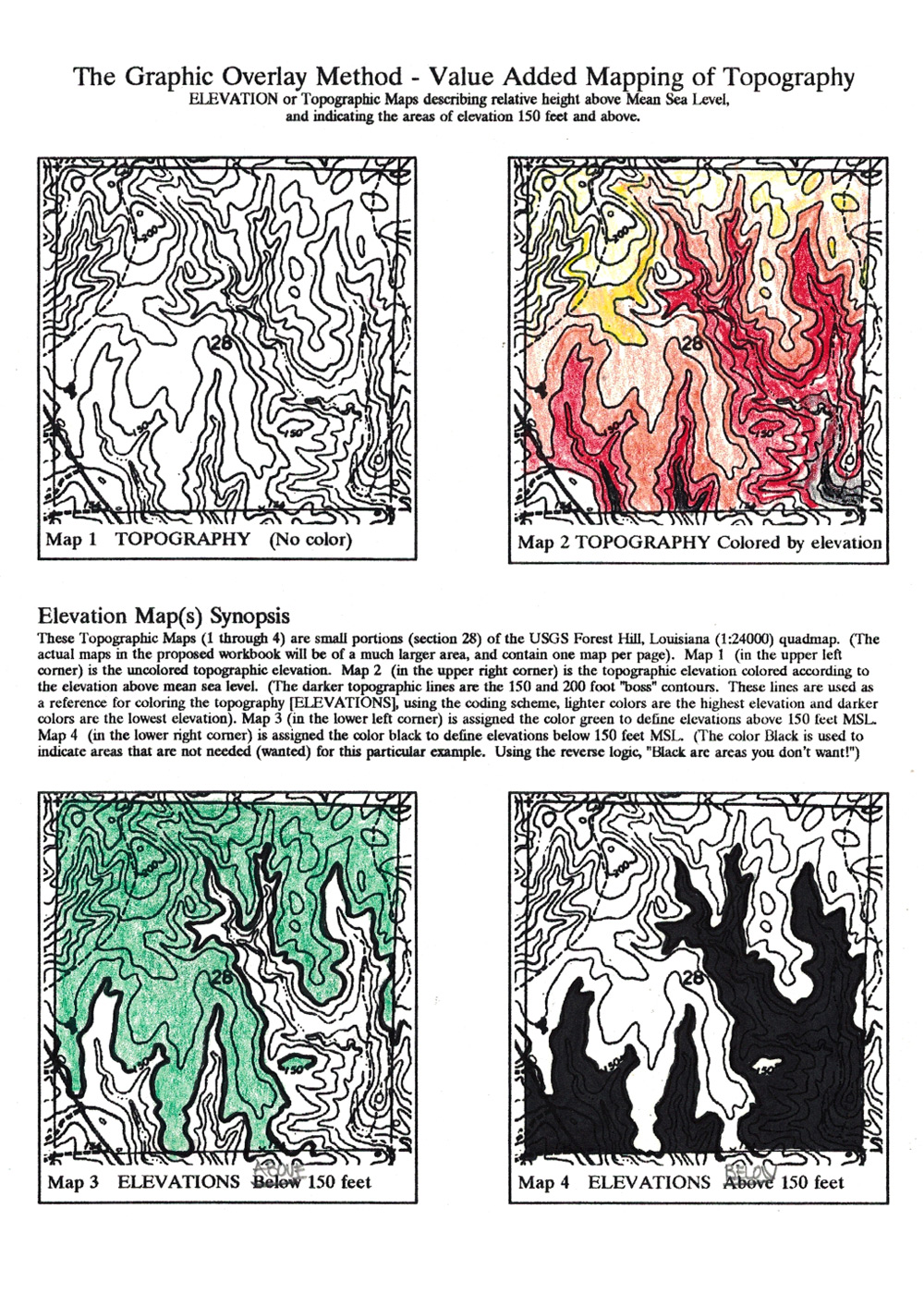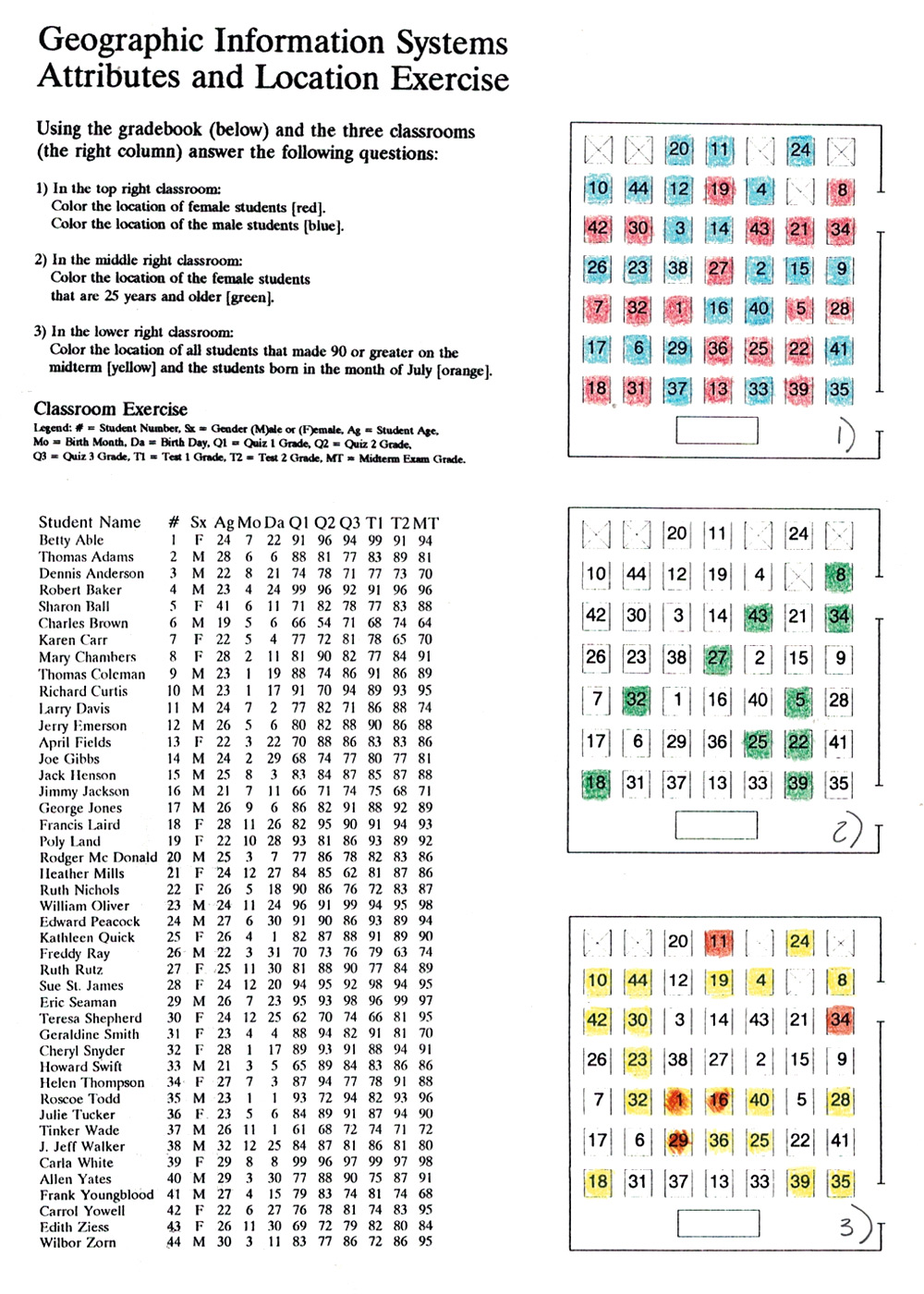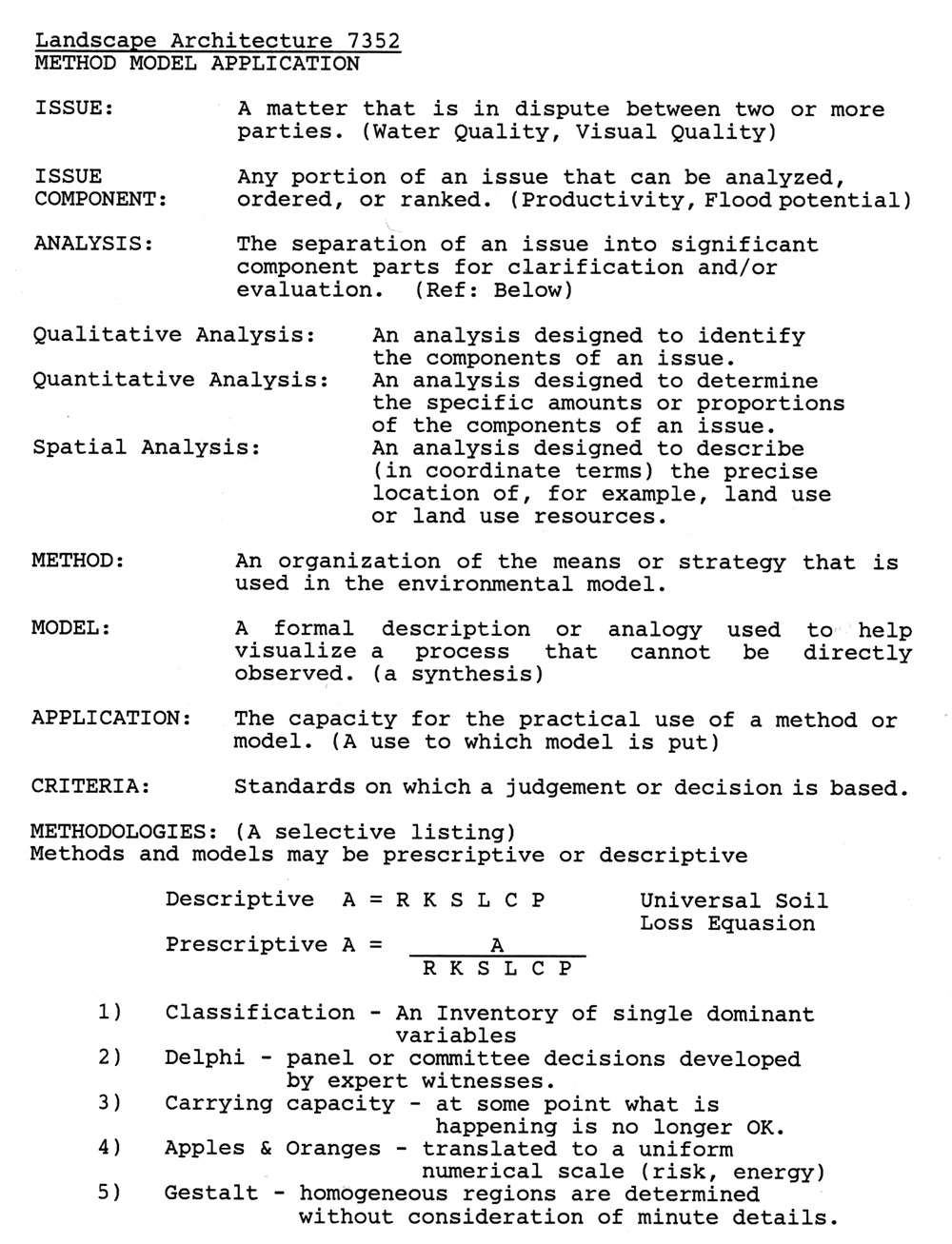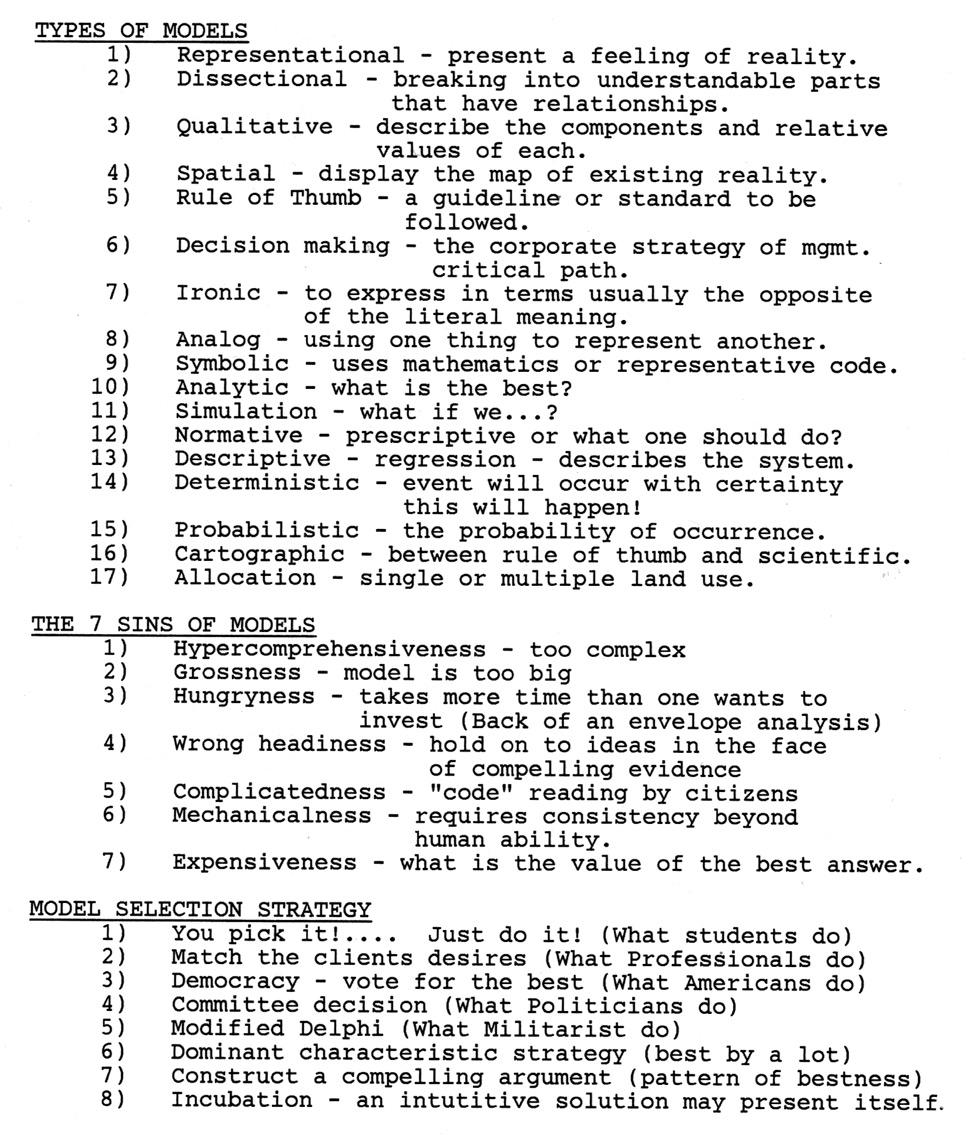Numeric, Symbolic, and Color Coding
To be functional to GIS, map information must be organized and segregated by appropriate categories that are specific to each earth resource or human activity.
For a particular category to effectively exist in the reality of GIS it must be symbolized by the closest approximation, and then assigned the appropriate “code value.”
Coding schemes are the essential component for the clear understanding and appropriate homogeneous delineating of landscape components. Obviously, particular coding schemes lend themselves to particular applications.
Typical GIS coding schemes:
Graphic coding such as hatching, dot patterns, and graphic textures are used extensively in value added mapping techniques.
Numeric coding such as whole numbers are used graphiclly in the GIS analysis process.
Color coding with red, yellow, and green, etc (with colored pencils). Used extensively for graphic and electronic map display.
Graphic coding schemes are best used with manual or hand-coded drawings. Layers of information are often graphically combined using vertical stripes, diagonal stripes, horizontal stripes, (in numerous combinations), but the “best” coding schemes seem to be “Color Codes” because they tend to be the most intelligible when used to delineate complex maps.
Coding Scheme Examples
The following are the two most basic category listings that characterize land resources, water resources, and human activities. This listing is sometimes called Land Cover, Land Type, Land Utilization, Land Activity, and (most commonly) Landuse. To be useful to geographic mapping efforts, all mapped features must be part of a larger classified scheme.
For Example:


Resource Inventory Land Use and Land Cover
United States Geological Survey (USGS), (Level I), (Anderson, et al)
[1] Urban or built-up land
[2] Agricultural land
[3] Rangeland
[4] Forest land
[5] Water
[6] Wetland
[7] Barren land
[8] Tundra
[9] Perennial snow or ice
Land Use Activities Inventory (examples)
(Level I), Urban Renewal Administration (URA)
[1] Residential
[2] Manufacturing
[3] Manufacturing (continued)
[4] Transportation, communication, and utility
[5] Trade
[6] Services
[7] Cultural, entertainment, and recreational
[8] Resource production and extraction
[9] Undeveloped land and water areas
Please notice the “emphasis” of the 2 listings.
The USGS category [1] contains the majority of the URA listings [1] through [9], and conversely, the URA category [9] contains the majority listings for the USGS [1] through [9].
Needed map information must often be gathered and organized from various sources. Before maps are useful to the Graphic Overlay Method they must be “prepared.” Not all maps are currently available in electronic format.
The best map information is still prepared by hand.

